-
Doctors
-
Specialities & Treatments
Centre of Excellence
Specialties
Treatments and Procedures
Hospitals & Directions HyderabadCARE Hospitals, Banjara Hills CARE Outpatient Centre, Banjara Hills CARE Hospitals, HITEC City CARE Hospitals, Nampally Gurunanak CARE Hospitals, Musheerabad CARE Hospitals Outpatient Centre, HITEC City CARE Hospitals, Malakpet
HyderabadCARE Hospitals, Banjara Hills CARE Outpatient Centre, Banjara Hills CARE Hospitals, HITEC City CARE Hospitals, Nampally Gurunanak CARE Hospitals, Musheerabad CARE Hospitals Outpatient Centre, HITEC City CARE Hospitals, Malakpet Raipur
Raipur
 Bhubaneswar
Bhubaneswar Visakhapatnam
Visakhapatnam
 Nagpur
Nagpur
 Indore
Indore
 Chh. Sambhajinagar
Chh. SambhajinagarClinics & Medical Centers
Book an AppointmentContact Us
Online Lab Reports
Book an Appointment
Consult Super-Specialist Doctors at CARE Hospitals

Rhinoplasty and Septo rhinoplasty
Rhinoplasty and Septo rhinoplasty
Septorhinoplasty Surgery in Hyderabad, India
People do not pay much attention to their nose until it is too large, too small, or it does not look good on your face. If the shape of your nose does not match the size of your face, you can always choose rhinoplasty to reshape your nose surgically. Rhinoplasty and septorhinoplasty are two different things. Both are meant to treat the problems associated with the nose but both have a different purpose.
Rhinoplasty
Rhinoplasty is a surgical procedure done to correct the shape, size, and symmetry of your nose. Rhinoplasty is the best option for people who have concerns with the shape and size of their nose, asymmetry of the nose such as a nasal hump or depression, an enlarged nasal tip, or large and wide nostrils. Rhinoplasty can be either done as an open procedure or a closed procedure. Your doctor can decide which procedure is the best for your case.
An open procedure will leave a scar across your nostrils. The scar will fade away and become unnoticeable once recovery is complete. In a closed rhinoplasty, there is no external incision but it is not recommended for every patient.
Rhinoplasty procedures may be different for every patient depending on their cosmetic concerns. The doctors at the CARE Hospitals can address your specific nasal anatomy and can decide the best procedure for your nasal surgery.
Septo Rhinoplasty
Septorhinoplasty is also a surgical procedure done to correct the functional problems of the nose. It also includes the surgery done to correct the crooked or deviated nasal septum. A deviated nasal septum may be present at the time of birth or may occur due to a nasal injury later in life. If you cannot breathe properly from one or both of your nostrils or have suffered an injury to the nose that has impacted your normal breathing, then the doctor will recommend septorhinoplasty for you.
A septorhinoplasty can be done as an open or a closed procedure. In a closed procedure, a small incision is made inside the inner lining of the nose to access the cartilage and bone of the nasal septum. Then, the doctor can remove the parts of the septum depending on the individual needs of the patient.
Types of rhinoplasty procedures
There are several types of rhinoplasty procedures, each tailored to address specific aesthetic or functional concerns. Here are some common types:
- Open Rhinoplasty: In this approach, the surgeon makes an incision across the columella (the strip of skin between the nostrils) in addition to inside the nostrils. This allows for better visibility and access to the nasal structures.
- Closed Rhinoplasty: The incisions in closed rhinoplasty are made only inside the nostrils, avoiding any external cuts. This technique is often used for minor adjustments and has the advantage of no visible scarring.
- Reduction Rhinoplasty: This procedure involves reducing the overall size of the nose, reshaping the nasal tip, or narrowing the nostrils. It is commonly performed for cosmetic reasons.
- Augmentation Rhinoplasty: Augmentation rhinoplasty is focused on increasing the size or projection of certain nasal features. This can involve the use of implants or grafts to enhance the nasal profile.
- Post-Traumatic Rhinoplasty: Post-traumatic rhinoplasty is performed to address nasal deformities or functional issues resulting from trauma or injury to the nose.
- Ethnic Rhinoplasty: Ethnic rhinoplasty is tailored to address the specific anatomical features of individuals from different ethnic backgrounds while maintaining their cultural characteristics.
- Revision Rhinoplasty: Also known as secondary rhinoplasty, this procedure is performed to correct or revise the results of a previous rhinoplasty. It can address issues such as asymmetry, breathing difficulties, or dissatisfaction with the initial outcome.
- Functional Rhinoplasty: Functional rhinoplasty focuses on improving nasal function, addressing issues such as a deviated septum or nasal valve collapse. It aims to enhance both the form and function of the nose.
- Non-Surgical Rhinoplasty: This involves the use of injectable fillers, such as hyaluronic acid, to reshape and contour the nose without the need for surgery. It is a temporary solution and is often chosen for minor adjustments.
Rhinoplasty vs. Septorhinoplasty
If you are not sure whether rhinoplasty or septorhinoplasty is the correct treatment to address your problem, then you can schedule an appointment with a doctor at the CARE Hospitals. The doctors at the CARE Hospitals have expert knowledge and experience in nasal surgery. If you have a crooked nose and a deviated nasal septum that makes breathing difficult for you, a septorhinoplasty with elements of rhinoplasty can address your both functional and cosmetic concerns in one single surgery. A septorhinoplasty is done to correct the large nasal tip, a dorsal hump, or any other aesthetic concern when the patient is already undergoing surgery to correct the deviated nasal septum.
Who might want to get rhinoplasty?
You may opt for a rhinoplasty procedure to:
- Address a congenital abnormality (birth defect).
- Enhance your overall appearance.
- Unblock nasal passages (such as in the case of a deviated septum).
- Fix a facial fracture, like a broken nose.
- Restore breathing capabilities following disease, cancer treatments, traumatic injuries, or burns.
Who is a candidate for rhinoplasty?
A suitable candidate for rhinoplasty should:
- Have completed their growth and be in good physical health.
- Avoid smoking.
- Comprehend the limitations of nasal surgery and maintain realistic expectations for the outcome.
- Desire the procedure for their own personal reasons, rather than due to someone else's opinion on their appearance.
What are the different surgical approaches to rhinoplasty?
There are two primary types of rhinoplasty procedures:
- Open Rhinoplasty: This is used for significant nose reshaping. The surgeon makes incisions to completely lift the skin off the nose, allowing a clear view of the bone and cartilage underneath for accurate reshaping.
- Closed Rhinoplasty: A less invasive procedure for minor reshaping. Incisions are made inside the nose, allowing the surgeon to access and modify the bone and cartilage without fully exposing the nose's structure.
Other forms of rhinoplasty include:
- Cosmetic Rhinoplasty: Aims to enhance the appearance of the nose and overall facial harmony.
- Nonsurgical Rhinoplasty (Filler Rhinoplasty): A cosmetic option that uses dermal fillers to temporarily smooth out imperfections, correct bumps, or lift the nasal tip without surgery.
- Functional Rhinoplasty: Focuses on restoring the shape and function of the nose following disease, injury, cancer treatments, or congenital defects, including fixing a deviated septum.
- Secondary Rhinoplasty: A corrective procedure to address complications or issues from a previous rhinoplasty. These revisions can be minor or more complex, depending on the original surgery's outcome.
Preparation
Both rhinoplasty and septorhinoplasty are done under general anaesthesia but your doctor can decide if the surgery will work well for you or not. When you schedule an appointment with the doctor, you will discuss the following things:
The doctor will first ask you about your goal for surgery. He will take your medical history including history of obstruction of the nose, surgeries in the past, any medications you take, etc.
The doctor will do a complete physical examination including laboratory tests and blood tests. He will also carefully examine the inside and outside features of your nose. This will help the doctor to determine what changes can be done and how other features of your body such as the thickness of the skin and strength of the cartilage will affect the surgery.
The doctor may also take photographs of your nose from different angles. The doctor may manipulate the photos using computer software to show you the results after surgery. The doctor can use the photos for before and after assessment and long-term results of surgery.
The doctor will also discuss your expectations. He will explain to you about the surgery and the results. You should openly discuss the results of the surgery. After discussing everything, the doctor will schedule surgery.
Before the surgery
The doctor will ask you to avoid medications such as aspirin for two weeks or more before the surgery. These medicines can increase the risk of bleeding. Avoid taking any other medications and only take the medicines recommended by the doctor.
The doctor will also advise you to stop smoking as it may slow the healing after surgery and can cause infection.
During the Surgery
You need local anaesthesia if only a minor correction has to be done. Both surgical procedures can be done as outpatient procedures and you can go back home the same day after surgery. It may take about 3-4 hours for surgery but it also depends on the concerns targeted while doing the surgery.
Rhinoplasty can be done inside your nose by making a small incision at the base of your nose to adjust the bone and cartilage underneath your skin. The surgeon can change the shape of our nose in many ways depending on individual needs.
You will be sent to the recovery room after the surgery. You may go back home the same day or may have to stay at the hospital overnight if there are other health issues. You cannot drive therefore someone must accompany you to take you back home after the surgery.
After the surgery
The doctor will advise you to take a rest for a week. You will be asked to keep your head raised to reduce bleeding and swelling. The nose may feel congested due to swelling or from the splints placed inside your nose. The internal dressing may remain inside for a week or so. Slight bleeding and mucus may drain from the nose for a few days after surgery. The doctor will also ask you to take the following precautions after the surgery:
-
Avoid doing any hard physical exercise after the surgery for a few weeks
-
Avoid blowing your nose
-
Eat high-fibre foods to avoid constipation. Include more fruits and vegetables in your diet for a quick recovery.
-
Avoid taking a shower and take a bath instead.
-
Brush your teeth gently and avoid frequent movement of your lips
-
Wear clothes that fasten in front and avoid clothes over your head
-
Avoid wearing eyeglasses and sunglasses for a month to avoid pressure on the nose.
Complications of Septorhinoplasty
Some complications can be serious and may even result in death.
General complications associated with any surgery:
- Bleeding
- Infection at the surgical site (wound)
- Allergic reactions to equipment, materials, or medications
- Venous thromboembolism (VTE)
- Chest infections
Specific complications related to this surgery:
- Adhesions, where scar tissue forms deep within the nose, potentially blocking airflow
- Infection-related bleeding
- Unattractive scarring on the skin
- Formation of a hematoma or abscess between the layers of the septum
- Nerve damage affecting the skin at the tip of the nose
- Nasal obstruction
- Creation of a hole in the septum
- Toxic shock syndrome is an infection affecting the bloodstream
- Cosmetic issues
- Problems at the donor site
- Graft rejection
- Decreased sense of smell
- Watery eyes
Consequences of this procedure:
- Pain
- Redness
- Bruising and swelling of the nose and the area under the eyes.
Are there any risks or side effects?
Every surgical procedure involves certain risks. Potential risks associated with a septorhinoplasty comprise:
- Excessive bleeding
- Infection
- Alteration in the shape of the nose
- Formation of a hole in the septum
- Blood clot formation in the nose
- Reduced sense of smell
- Adverse reaction to anesthesia
- Temporary numbness in the gums, teeth, or nose
Informing your surgeon about any existing medical conditions is crucial to minimize the risk of complications. Conditions like lupus, osteoarthritis, smoking, and certain medications can elevate the chances of impaired wound healing.
In some cases, individuals may not experience an improvement in symptoms following a septorhinoplasty. Additional surgery might be necessary to address persistent symptoms.
Stages of swelling after rhinoplasty
Right after rhinoplasty surgery, you will notice swelling. This occurs when fluid accumulates within and beneath the skin, making your nose appear larger than usual. The swelling progresses through various stages:
- Four to Six Weeks Post-Surgery: Expect your nose to remain swollen for this period, appearing larger than normal. Bruising or discoloration may also occur around the nose as it heals.
- Three Months Post-Surgery: Swelling will gradually reduce within the first three months. By this time, about 90% of the swelling should have diminished.
- One Year Post-Surgery: Some minimal swelling may persist for up to a year after surgery. The complete results of the procedure will only be visible once all swelling has resolved.
Healing after rhinoplasty varies for each individual, so the level of swelling and the timeline for seeing the final results may differ. It’s important to follow your healthcare provider’s post-operative care plan and attend all follow-up appointments to ensure proper healing of your nose.
Lifestyle changes to heal faster
To promote faster healing after rhinoplasty surgery, consider adopting the following lifestyle changes:
- Stay Hydrated: Drink plenty of water to help reduce swelling and aid the healing process.
- Eat a Healthy Diet: Include nutrient-rich foods that are high in vitamins C and K, as well as protein, to support healing. Foods like fruits, vegetables, lean meats, and whole grains are beneficial.
- Avoid Smoking and Alcohol: Refrain from smoking and drinking alcohol, as both can impair blood flow and slow down the healing process.
- Get Plenty of Rest: Prioritize sleep to allow your body to recover. Aim for at least 7-8 hours of sleep each night.
- Limit Physical Activity: Avoid strenuous exercise and activities that may increase your heart rate or risk injury to your nose, especially in the early weeks post-surgery.
- Follow Medical Advice: Adhere to your surgeon’s post-operative instructions, including taking prescribed medications and attending follow-up appointments.
- Manage Stress: Practice relaxation techniques, such as deep breathing or meditation, to reduce stress, which can negatively affect healing.
- Use Humidifiers: If your environment is dry, using a humidifier can help keep the nasal passages moist and promote comfort during recovery.
- Avoid Allergen Exposure: Stay away from allergens and irritants, such as dust or strong fragrances, which could aggravate your healing nose.
- Wear Comfortable Clothing: Choose loose-fitting clothing that doesn’t need to be pulled over your head to avoid accidental contact with your nose.
Our Doctors
-
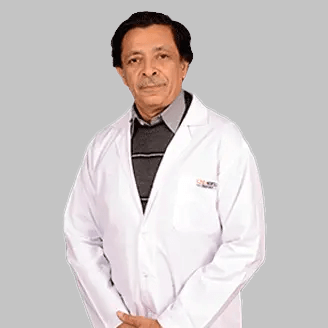
Dr. Shailendra Ohri
MBBS, MS (ENT)
ENT
View More -
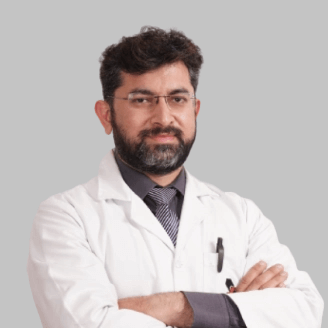
Dr. Rishi Ajay Khanna
MBBS, MS (ENT Head & Neck Surgery)
ENT
View More -
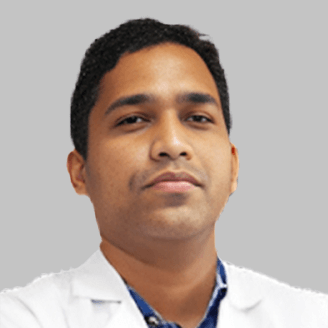
Dr. Chaitanya Pentapati
MBBS, MS (OTO, RHINO - LARYNGOLOGY)
ENT
View More -
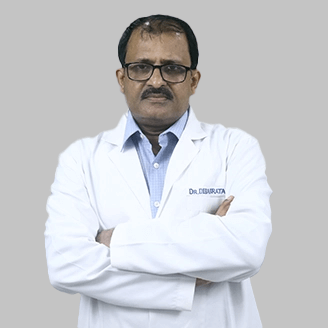
Dr. Debabrata Panigrahi
MBBS, MS (E.N.T)
ENT
View More -
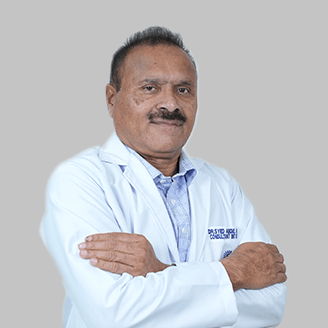
Dr. Hakeem
MBBS, DLO
ENT
View More -

Dr. M. A. Amjad Khan
MBBS, MS (ENT, Head & Neck Surgeon)
ENT
View More -

Dr. MD Kareemullah Khan
MBBS, MS (ENT), MRCS (England)
ENT
View More -

Dr. Moinuddin Mohammed A.K
MD, CCEBDM, MS (ENT)
ENT
View More -
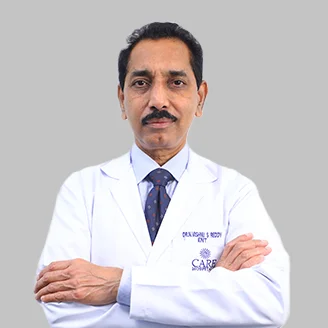
Dr. N Vishnu Swaroop Reddy
MBBS, MS ( E.N.T.), FRCS (Edinburgh), FRCS (Ireland), DLORCS (England)
ENT
View More -

Dr. Prateek Raj Betham
MBBS, MS (ENT), FHNSO
ENT
View More -
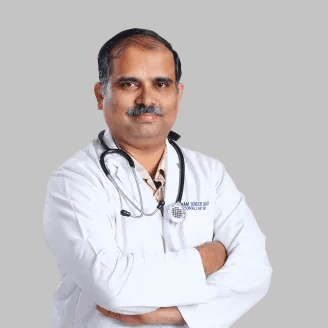
Dr. Ram Sunder Sagar
MBBS, DLO
ENT
View More -

Dr. Ramesh Rohiwal
MBBS, MS (ENT), PGDHHCM
ENT
View More -

Dr. Ranbeer Singh
MBBS, DLO (DNB)
ENT
View More -

Dr. Shruthi Reddy
MBBS, DNB (ENT)
ENT
View More -

Dr. Surbhi Chopra
MBBS, MS
ENT
View More -
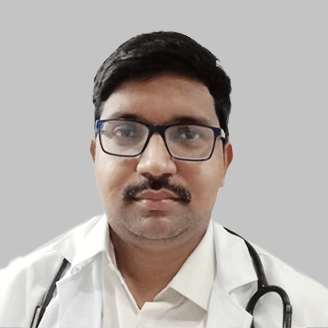
Dr. T.V.V. Vinay Kumar
MBBS, MIMS, MS (ENT), MBA
ENT
View More -
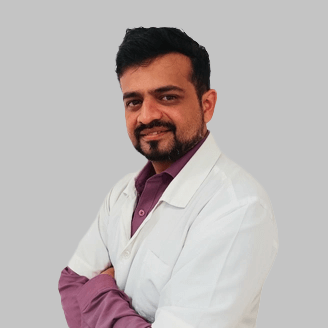
Dr. Vikrant Vaze
MD - Physician, DNB - ENT
ENT
View More
Frequently Asked Questions
Still Have a Question?

